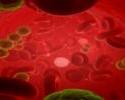Optogenetics is a neuroscience technique that is helping researchers understand the brain circuits, or erroneous brain circuits, involved in OCD.
It is a fascinating use of technology that has allowed scientists to abruptly stop OCD behavior in mice.
How It Works
The use of optogenetics gives researchers precise control when stimulating the brains of lab animals. This precision is accomplished by implanting a bit of light-sensitive genetic material, taken from a simple light-seeking organism, into specific neurons in mice or other animals.
The pirated genetic material makes the implanted neurons light-sensitive as well. So, with a pulse of light, the genetically sensitized neurons can be instantly and accurately activated.
Researchers at MIT used this technology to get mice that compulsively groomed to immediately stop grooming. The light triggered a sub-circuit in the brain that inhibits the compulsive action.
“The exciting thing about these results is the second we turn on the light, the animal stops doing the abnormal thing,” said MIT neuroscientist Ann Graybiel. “It’s a you-don’t-believe-your-eyes sort of thing.”
What this Research Means for Humans
Unfortunately, the light impulse is delivered via a cable implanted in the laboratory animal’s skull, so this procedure is not yet close to be used on humans. The mice do not have a choice. Plus, the human brain's neural pathways are far more complex than our intrepid rodent stand-ins.
However, the research still has current therapeutic uses because it provides precision knowledge about specific brain circuits involved in disease. Deep brain stimulation, for instance, is currently being used to treat people with OCD. The optogenetic studies may help to determine which areas or pathways in the brain to stimulate for optimal results.
By shedding light on the circuits involved in compulsive behavior, optogenetics may also give scientists a better understanding of the repetitive behaviors in autism, Tourette syndrome and addictions.
Another Optogentics Study
A separate study completed at the McLean Hospital in Belmont, Mass., used optogenetics to successfully activate OCD behavior in mice.
The McLean study and the one done at MIT targeted circuits in the brain’s striatum, but each study honed in on slightly different neuronal targets. The findings strongly suggest, even to non-scientists, that some circuits in the striatum are inhibitory and other striatum pathways are stimulatory for OCD behaviors.
“It is absolutely stunning how very precise and cell-specific these circuits are turning out to be,” said Graybiel. “You can move a millimeter and [be targeting] quite different functional control circuits.”
Sources: The Scientist and Boston.com








